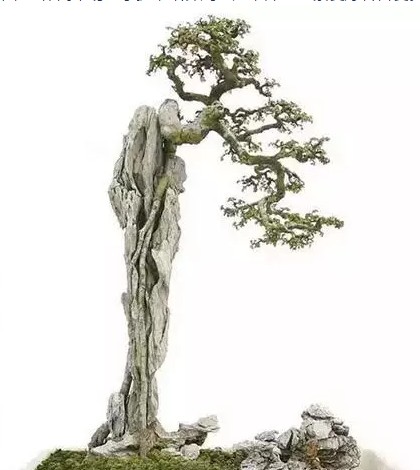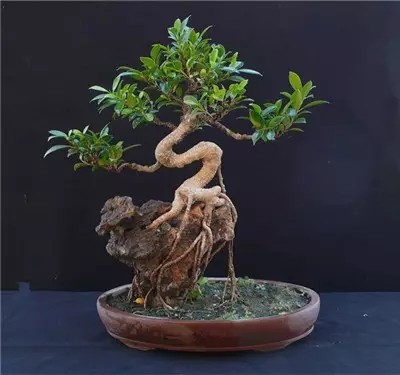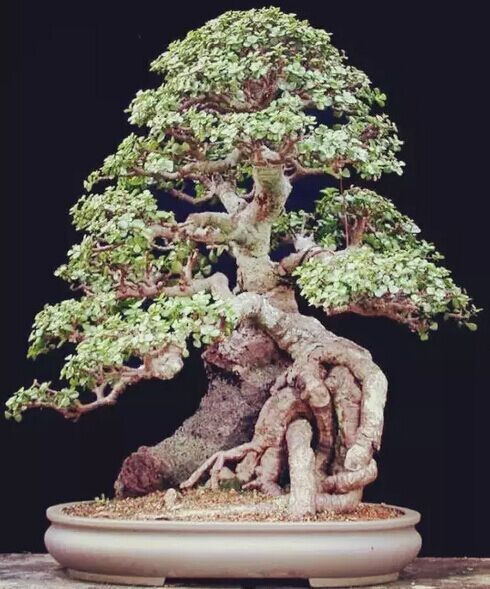Exquisite stone bonsai
The inheritance of Chinese bonsai art for more than a thousand years is known as "three-dimensional painting" and "silent poetry". Bonsai with stone is the further inheritance and development of bonsai art. Stone players and bonsai lovers are deeply attracted by the perfect blending of stone and trees.

According to the usual practice, the following is to present you with exquisite bonsai with stone for your enjoyment!
Bonsai, carrying plants in utensils with humanistic wisdom, intercepts a corner of nature to form an independent landscape.
In the bonsai world, there is a kind of bonsai that skillfully combines trees and rocks into one. Trees are born with stones, trees are graceful, and stones are powerful, creating a unique bonsai with stones.
Stone bonsai, also known as stone bonsai, reflects the natural style of trees growing on rocks, and is an exaggeration and close-up of trees tenaciously growing in cliff gaps or peaks.
It has rich content, far-reaching artistic conception, beautiful shape, exquisite conception, various forms, simple production and easy to master, short training cycle, and is deeply loved by bonsai lovers.
Not subject to proportional constraints, allowing a certain amount of exaggeration is one of the major characteristics of stone-attached bonsai, big trees and small stones, focus on viewing trees, can be classified as bonsai trees; while trees and small stones, focusing on stone appreciation, are classified as bonsai landscapes.
In the bonsai, the trees grow on the stone, extend the root system and grow between the stone, and the branches bend and stretch out on the stone cave or cluster on the stone, or under the overhanging stone, or horizontally near the stone, so that the strange stone and the ancient tree match each other.
Stone-attached bonsai can be divided into two types: water-attached stone and dry-attached stone. Most of the water-attached stones are made of cancellous stones, such as water-absorbing stones, sand stones, etc., to make holes where trees need to be planted, and to use newly formed trees with multiple forms, first introduce the roots into the stone holes, fill the stone holes with broken mud, stick the soil and roots with bamboo poles, spray the soil and stones thoroughly with a spray can, then put them in a shallow water basin and place them in a cool place.
Spray water on the stone tree every day, maintain humidity, wait for the tree to sprout, let it see the rising sun, gradually adapt to the sun.
Dry attached stone type, mostly adopt hard stone, such as quartz stone (various textures), take the potential shape of the tree root inlaid in the human stone seam, and mostly use Fujian tea with long root system.
Time: 2019-06-04 Click:
- Prev

Master-level Stone Bonsai Plastic Arts
Attached stone bonsai is a kind of bonsai plastic art, which is mainly stone, trees grow on stone, and stone trees are connected into one. Trees are attached to rocks, roots extend into cracks in rocks, branches twist and extend into caves or clusters on rocks, or hang under rocks, or slope horizontally beside rocks, so that strange stones and ancient trees contrast into interest
- Next

Collection of pile scenery with stone bonsai
In general, the pile scene is to plant the stump directly in the basin soil, and its production and maintenance are relatively easy. If the stump is like living on the stone and growing on the stone, it will be a stone-attached pile scene with special interest. There are many kinds of ornamental stones, but rocks with hard texture and non-water absorption are generally not used, otherwise they are not easy to process.
Related
- Fuxing push coffee new agricultural production and marketing class: lack of small-scale processing plants
- Jujube rice field leisure farm deep ploughing Yilan for five years to create a space for organic food and play
- Nongyu Farm-A trial of organic papaya for brave women with advanced technology
- Four points for attention in the prevention and control of diseases and insect pests of edible fungi
- How to add nutrient solution to Edible Fungi
- Is there any good way to control edible fungus mites?
- Open Inoculation Technology of Edible Fungi
- Is there any clever way to use fertilizer for edible fungus in winter?
- What agents are used to kill the pathogens of edible fungi in the mushroom shed?
- Rapid drying of Edible Fungi

